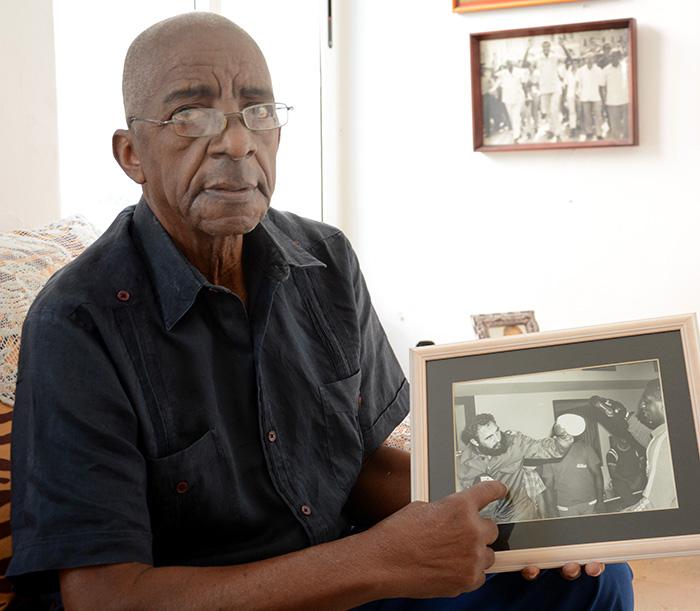
He was obliged to sell a lot of peanuts and newspapers, shine a lot of shoes in his native Santiago de Cuba to pay for his studies and put food on the table at home. Despite the effort, he was not able to finish primary school, but he never gave up. Yes, he was poor, but he had a thirst for knowledge. Paradoxically, it was his asthma that led him to boxing, since a trainer told him the exercise would be good for him, and it was the gloves he chose.
Once revolution reigned in Cuba, he began working as a mechanic for the Ministry of Public Health, and in the evenings, would go to the gym on
Agua Dulce Street, in the Havana municipality of Cerro.
He was practically invincible, though, like all human beings, he had a weak side, but he never let it show. In boxing, he said, “You have to hide your defect, putting all your virtues on the mat.” This is why, in round 84 of a life full of victories for his people, he remains undefeated.
Alcides Sagarra Carón, the teacher, the trainer, the PhD in Sciences of Physical Culture, the creator of the Cuban school of boxing, the best coach in the world, according to the International Boxing Association (AIBA), Fidel’s friend, is celebrating his birthday.
Are his 32 Olympic gold medals, 63 World Championships and 64 crowns in world juvenile competition, enough to honor him? No doubt, but he is naturally unsatisfied, and I am sure he wants to continue winning, that is, he wants Cuban boxing to continue winning. Thus, if we want to salute this life, there is no better way than to recall how the professor produced every one of the victories and the emotions we experienced with every fight.
The first thing he did was make a science of boxing, even though when he assumed the leadership of the national team, he had just finished the sixth grade, a task that had remained pending since his childhood. Within the coaching staff he promoted questioning and the search for knowledge, and gave a personal example, earning a bachelor’s degree in Physical Culture and, in 1992, a PhD.
I heard him say, “The Cuban school of boxing is a center for champions, because we not only throw punches here. You go through a comprehensive process of learning, that involves the professor and the athlete as a unit. Our boxer knows his rivals and knows himself, on the biological, technical, tactical, physical order, but psychologically, as well. Then the trainer needs to guide all this baggage to turn it into a medal, since, while there is a pattern to be followed, every athlete has his individuality, from the social point of view, his character, even his motivational responses. The successes of Cuban boxing are not a matter of chance, but rather the result of the interaction between the training and applied sciences: pedagogical, psychological, biological, medical, and others.”
Alcides always had one maxim: “An athlete must know what he represents, and this is the reason we include humanistic sciences in training. Representing the Cuban sports movement means fighting for your flag, and in our case, for the Revolution, because that makes you invincible. And the proof is there, that is why they call us the flagship of Cuban sports.”
He does not hide his pride in the hundreds of times Fidel called him, showed confidence in him, in the Comandante en Jefe’s visits to the Holvein Quesada, camp in Guajay, headquarters of the Cuban school of boxing, that the leader of the Revolution himself founded. “He might come by for an hour, or three; he would even put on gloves. He was the boxers’ best friend,” the prof never tires of saying.
One anecdote comes to mind that cannot be forgotten in any dialogue with
Sagarra. In the boxing finals at the Pan American Games in 1991, first place between Cuba and the United States in the medal count was to be decided. Fidel, as usual, wanted to see the boxers, but Sagarra said no. “The Comandante sent someone for me and asked me why. I told him I didn’t want them to get excited. He gave me a hug, said he agreed and that I would win many, many medals.”
That night, Cuban boxing won 11 of the 12 titles contested, and for the first time led the Americas in the continental Games.






